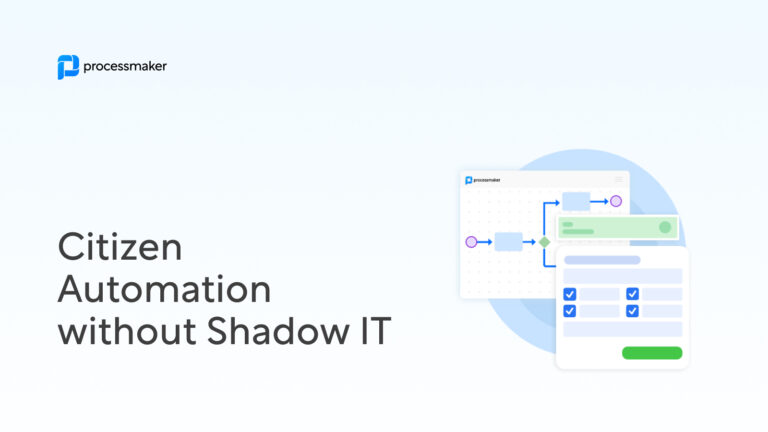The pandemic response from enterprises globally may be shifting the artificial intelligence (AI) race towards a new fast lane: process mining.
From a pre-pandemic market size of $110M in 2018 to nearly three times greater in 2019, 47% of enterprises are now using or planning to leverage process mining. It’s no secret that businesses want the recipe to work leaner and smarter in the wake of the recent global economic shakeup. AI and automation are at the forefront of that effort.
Today’s AI tech, like machine learning, helps by making work more predictive and adaptive — but needs data on how you work today to train it. Rather than dump exhausting manual hours into traditional process mapping, teams may opt to piecemeal processes into their robotic process automation (RPA) efforts and dissect any auto-generated insights.
However, businesses are discovering flawed ingredients make sour results. Where RPA can lead to faulty AI data sets, going back to the roots of the recipe with process mining may reliably build true-to-life blueprints of your daily operations.
Let’s explore how process mining and low-code automation tools could be a better entryway to more reliable AI use.
Why RPA holds Artificial Intelligence back from success
In pursuit of smarter ways to fuel AI, bot-based process automation can be summed up as getting what you put into it.
Since traditional RPA must be built out step-by-step, the steps themselves must:
- Match how the process works “as-is” in reality.
- Perform free of major inefficiencies.
- Be standardized to be executed the same way every time.
Ideally, a clean RPA setup would create an ongoing, time-lapsed history of how a process really works, as well as all the possible influences that shape it and a wide range of outcomes.
Revealing your operations across processes and departments would then give an AI tool a strong range of patterns to learn from.
From intelligent chatbots to predictive sales report analysis, various tools could utilize data organization-wide to a web of continuously improving operations with less human labor hours and fewer flaws.
This ideal is not the state of modern process automation. In fact, fast-tracking outputs from “bad” processes has led some organizations to amplify low quality results rather than improve them.
1. Inaccurate processes
First, RPA insights may be based on a flawed view of real-world operations. Behaviors of staff and customers have changed radically over the past year alone. If you’re gleaning today’s process steps from employee interviews, you might be missing key steps that make your workflows perform at their best.
2. Inefficient processes
Second, processes might have deviated away from their original workflow, or simply be poorly built by design. For example, dated operating procedures for invoice processing might have redundant sign-offs. Alternatively, employee workarounds could be sprinkled into various processes for their convenience at the cost of quality.
3. Non-standard processes
Third, automation may not even be possible with processes that are either partially or completely non-standardized. If your team doesn’t complete tasks in a repeatable way with predictable results, any attempts at RPA will be unreliable.
In any of these cases, your process map might be dense with mistakes, shortcuts, and wasteful steps that don’t meet your essential needs.
Processes typically should not be automated for more output until they are re-examined for effectiveness. Yet, enterprises may find it tempting to automate low-hanging fruit regardless.
Ultimately, attempts to scale misconstructed RPA bring many businesses back to square one.
How legacy process mapping factors into flawed RPA
Even with clean processes, automation design itself can be a roadblock to AI training.
Better RPA design would equal better data sets — in theory, at least. However, manual process mapping in itself opens the door to all sorts of human bias and oversights. These errors taint the outputs and throttle automation results across the organization.
Additionally, legacy process mapping ties up hours of effort in information gathering and analysis. Stacked with laborious RPA coding, it’s often not the quickest method to scale.
How process mining and low-code could overtake RPA
The biggest takeaway? A theoretical process map and traditional RPA will have challenges to mirror their real-world counterparts.
The drawbacks of RPA have spurred a deepened focus on pre-automation prep. Process mining and low-code automation are becoming a more attractive way to generate AI training data. Specifically, their benefits are three-fold:
- Faster implementation and results
- True-to-life visibility
- Ongoing monitoring
Rather than data gathering via traditional means, process mining builds timestamped logs of events within a larger workflow.
Mining tools tap directly into your applications using a shared point of connectivity — application programming interfaces (APIs). From customer relationship management (CRM) apps and beyond, organizations can extract process data in realtime without the extra effort.
This pivotal intersection between business process management and process mining is known as process discovery.
Process discovery explained
Finding chances to cut costs via automation becomes much easier when organizations have confidence that their process data can be trusted. In other words, better process visibility invites clearer prioritization.
- By getting tools and workflow components to easily “talk” with each other, any data gathered has less risk of miscommunication.
- Additionally, collecting information on the process as it is in real-life means enterprises don’t have to look far to understand what’s really happening in their business.
- Finally, ongoing process monitoring can help clarify if workflows are being consistently adhered to.
When teams understand what’s actually happening, and where issues are, red flags within a process can easily be questioned and culled while the healthy steps remain.
For instance, ideal workflows can be brought into standardization to be shared with other organization branches. Some processes might already be healthy enough to push into the automation pipeline even faster.
In any case, the confidence in knowing your processes opens the door to better decision-making around automation efforts.
How does low-code automation fit in?
As a result, modeling templates for automation can occur much quicker and easier.
Low-code automation tools step in to simplify setup by eliminating the coding knowledge requirements. Instead, these are driven by visual process builders with features like drag-and-drop design tools that virtually any staff could use.
Process mining can continue to monitor these automations and unpack what’s working — and what’s not.
In tandem, process mining and low-code automation tools invite organizations to become more efficient and scalable.
Additionally, the agile nature of these tools provide better flexibility than traditional RPA when organizations are faced with rapid changes. The ability to adapt will continue to rise in value as we proceed into the pandemic and beyond.
What might throttle AI-focused process mining and low-code automation?
Despite the abundance of benefits, process mining and low-code automation have two key drawbacks that could hinder AI training:
- Lack of context
- Employee distrust
While the landscape of these concerns is yet to be fully unpacked, we can confidently explore some aspects.
Context
Problem: Context in process events is often derived from how employees behave to complete a step. At this individual level, purely event-based app logs could overlook how a user navigates graphics user interfaces (GUIs) in their workflow, such as those in CRM applications.
Additionally, mining may suggest automating flawed or wasteful processes that a human-based process analysis would catch.
Possible solution: Task mining can cover this visual component to layer more context into how each user works. Process mining alone illustrates when and how often actions are done. As a companion process to process mining, task mining helps teams understand how something is done.
For deeper context, mining could be leveraged as additional information to guide human process analysts.
Privacy
Problem: Employee surveillance continues to be a hot-button issue around monitoring tools like process mining. Consider that with enough data, staff activities can be dissected with a fine-tooth comb to determine all types of routines.
Many employees understand tracking how long a support ticket takes to resolve, but draw the line at learning on average how long their bathroom breaks are.
Possible solution: Work with your compliance and information security teams to find clear lines on responsible data collection. Not only should teams be considering ethical boundaries, but legal boundaries like The General Data Protection Regulation (GDPR).
Clarifying the goals and remaining transparent in data collection could earn support from your teams across the organization.
Losing jobs to machines
Problem: Automation of any sort is aligned with the ultimate goal of replacing human labor where possible. While today’s low-code tools help introduce workflows to augment human staff, many tasks could be chipped away from jobs with time.
Inevitably, some roles will shift from “human-exclusive” to “machine-ready.” From factory roles to white-collar office jobs, people naturally fear their hard earned skillsets becoming obsolete.
Possible solution: Transparency and opportunities for growth into future-focused roles will be critical in fostering open adoption of automation tech. For example, companies are increasingly inviting frontline staff to utilize low-code tools as citizen developers.
By getting teams involved in the improvement of their own workflows, they can see the benefits firsthand. As a result, they’ll grow into skill sets that are invaluable to the future job market.
The role of process mining and the DigitalOps Toolbox in AI adoption
As organizations delve into the rabbit hole of process mining, more roadblocks may surface. For the most efficient means of collecting AI training data, many teams might find benefits in complementing its strengths and weaknesses with other digital operations toolbox technologies.
For instance, mining has already found a home in fueling RPA bots of some other organizations. In rare situations where low-code cannot fulfill the niche needs of a team, custom-coded RPA might be well-suited for these solutions.
However, finding a single platform to build your automation and monitor your processes is often healthiest for scaling organization-wide. Low-code is helping to bridge many disparate methods under one umbrella, especially when integrated into intelligent business process management software (iBPMS).
Housing all your tools in the right place not only fosters better processes and automation, but stronger feedback loops for AI. For many, process mining and low-code automation may prove to be a faster, more efficient entry point into this realm.





